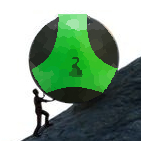If any of you poggers utters the word wheat I'll.....say some real mean words and I don't care if you tell my mom
beans don't just put into the soil they affix some nutrients while taking some out plants need a variety of things from the soil it's not as simple as a single variable process
Why not though? Out of anywhere this would be the place people would genuinely love to read about beans
It's potatoes. Threw some bad potatoes out of the window at my mom's house a couple years ago expecting then to get eaten by birds, but instead a squirrel buried them and I got like 10 more from it
I accidentally grew potatoes one year, I don't even know how it got in the garden bed.
Soy's ability to trigger chuds makes it top tier.
Also I love the logic. Do they think trans women are wasting their money on medications and surgeries when they could just eat a cup of soybeans every day?
I know several people who would if that was when a possibility.
Soy's been done dirty by big ag, though. It's one of the most heavily over-fertilized and chemically-treated crops in the world.
Yeah, most soy acreage in the US is genetically modified; either glyphosate-resistant RoundupReady or Bt-producing.
Look at this, look at these westoid anglo cracker wasp mfers not even once mention Sorghum, this is why I'm a third worldist :soviet-huff:
I was going to mention sorghum you fucking asshole, now I've got nothing to say.
Yeah but specifically that kind of 白酒 is known for being cheap and fucks you up quick. Truly the people's spirit.
For the sake of argument, the peanut. High in protein, high in fat, it's a legume :think-about-it:
I mean it has to be the Milpa, corn beans and squash. Crops should be an ecosystem of their own that gives back to the land as much as it takes. Farming systems like the Chinampas that objectively make the world way cooler are sick af. Honestly I'd just copy whatever pre-columbian americans did, thems were some right thinky motherfuckers
:swole-doge:
I watched a video of some people in Mexico (or Guatemala?) researching ways to do industrialized farming milpas so that you could get the benefits of both: high-quality regenerating soil, high yield, and few inputs. Wonder how that research is going...
Farming methods are getting a lot more efficient but one thing to consider is that the primary advantage of industrial agriculture is that a few people can work extremely large amounts of land. Permaculture/indigenous agriculture uses land more efficiently and is better for the environment. Using these techniques mostly means that slightly more people will need to be employed in agriculture, but working these kinds of farms is super cool and plenty of people would be happy to do it.
The main thing that industrial ag seems to do better is mass production of cereals but honestly most of those just go to feeding livestock. So cutting those animal ag subsidies and having better animal welfare laws will drastically cut the amount of cereals that we need to produce.
My point is that with some changes we could meet all of our food needs with what are essentially modern takes on indigenous agriculture. We can always make ag more efficient but these practices are enough as is. There are tons of regular ass american farmers who are ditching soy and corn fields for low imput integrated agriculture where they will typically mix livestock with several different kinds of crops and small orchards. They make so much more money off of the same land by using these techniques. Honestly its kinda about returning to peasant farming, which if you've read your mao or minh, which I haven't, you'll know they can become class conscious in a hurry.
I'd be super interested in that video though, I absolutely love this topic. Andrew Millison has this really cool video about about chinampas, a farming technique that turns shallow lakes into farming canals. Applying this technique to other shallow lakes or wetlands could be super cool.
Flax is cool. You can eat the seeds, the oil has industrial applications, and I know you all love yards of linen.
Rice is the food of the people worldwide, other answers are revisionism
Potatoes beat rice because the former is easier to grow in more places, in my opinion.
Sweet potatoes are a close second. The leaves can be sautee'd like spinach, the tubers can be eater raw/undercooked without the same ill effects that potatoes can cause. The stems produce a toxin that works a bit like LSD though, so don't eat them raw.
Yes, sweet potato > potato.
In a potato everything but the tuber is poison, and if the tuber is in the light too long it just becomes poison.
Sweet potato you eat all of it. Everything. And it stores really well at room temperature
this is the first that I've heard about sweet potato stems being psychedelic
I heard a story recently about it and after some quick looking up of things, it seems legit.
I didn't know you could eat the greens. I'm going to have to try that.
Yup, if you've got a fairly decent vine going ( or a plot of several vines) you just go out and snip off the largest leaves as you need them. A small handful should make an okay portion (after cooking) for a single person.
Nah it’s wheat. Bread. Pasta. All the hundreds of forms of those things. Wheat probably makes up like 70% of my diet
“What’s the best crop, aside from the obvious best choice?” :funny-clown-hammer:
Oyster mushrooms.
-
Saprophyte that will technically grow on anything with cellulose to break down. Bioefficiency is the limiting factor there. That means you can practically turn agricultural and forestry waste into food. Coconut coir, hardwood sawdust, corn and sugarcane stalks, straw, coffee beans, manure. If you can sterilise it, you can use it and get a second crop without additional field work.
-
Minimal inputs. The only nutrient you need to supply is nitrogen, and that can be with sources like gypsum or coffee beans. The only pollution with fungiculture is the polypropylene grow bags most commonly used outside of jars. Success is all about environmental control rather than nutritional profile so it's much simpler than horticulture.
-
The colonies are edible to livestock if the base material is. After the straw or grain colony stops producing mushrooms, the myceliated straw/grain is extra healthy feed.
-
It's great for cardiovascular and immunological health, and is anti-inflammatory
-
It replaces pork in dishes. It vastly improves staple foods like rice and bean dishes.
-
It can be grown in passive indoor conditions. 60-80f, 80%~ relative humidity. The latter means misting a plastic tub a few times a day.
That 5th point is where I see particular value for us. The Black Panthers integrated themselves into the community by providing free breakfasts for children. As things get worse, diets are going to revert back to smaller portions of more basic foods. With oyster mushrooms you've got a luxury ingredient that adds a lot to otherwise simple dishes and it can be grown in the background as green recycling. When I get a homestead together, supporting a mutual aid effort with them is a priority. Good food will gather hungry people.
-
it is the humble potato and if/when the collapse of society means I have to sustain myself off of farming, I will be farming potatoes and trying to not tap into my faint irish heritage









